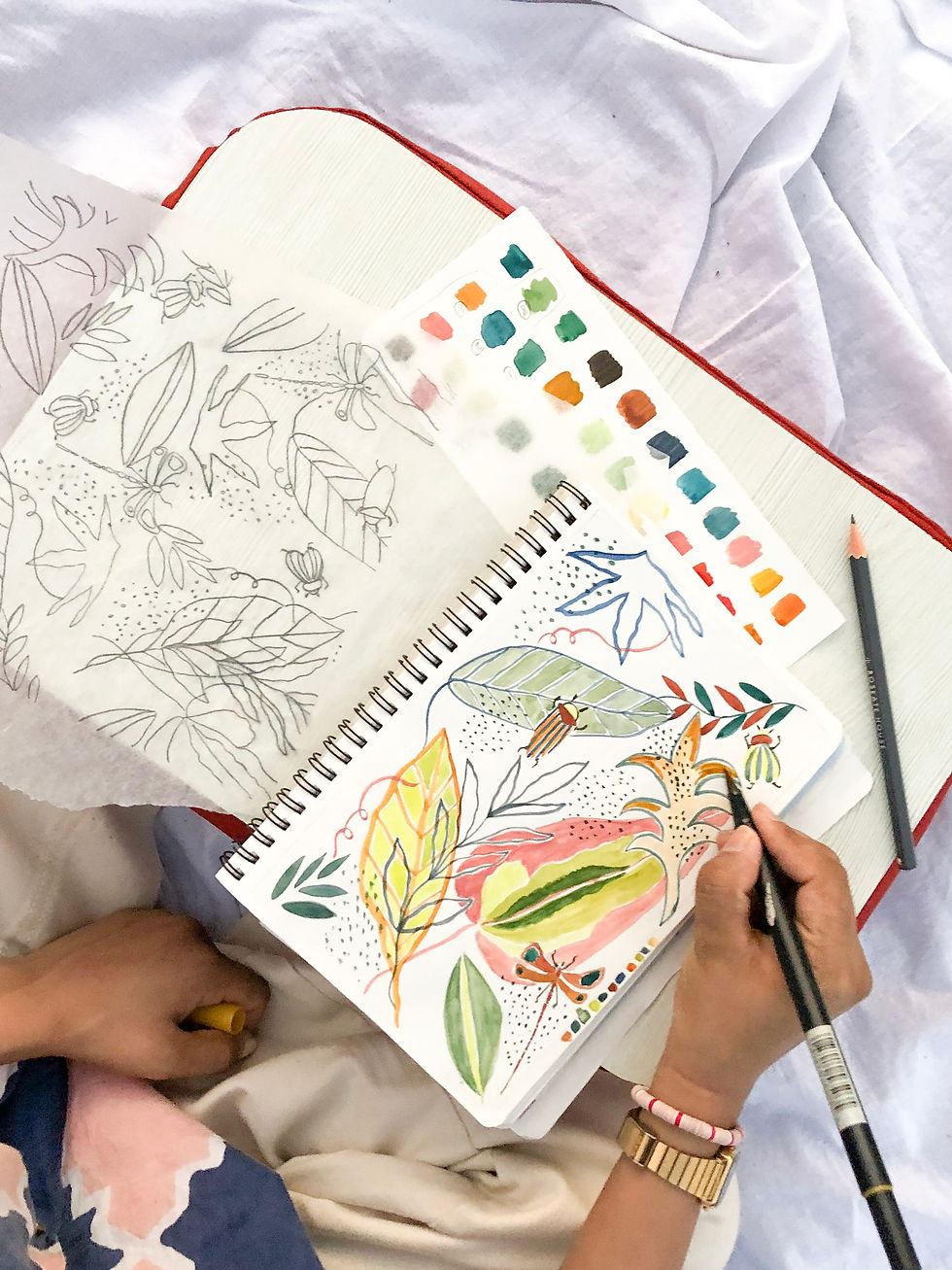Pashmina or Cashmere?
- HOWS

- Jan 2, 2019
- 3 min read
The phrases "pashmina" and cashmere" are today applied to such a wide variety of textiles: from cheap "pashmina" silk-polyester-wool blend scarves available in tacky tourist shops, to "cashmere" sweaters from China sold at fast fashion stores, to the priciest and most luxurious shawls. So what really defines the two and how can you tell your pashmina from your cashmere?

What is pashmina, what is cashmere and what is a shawl?
Well, isn’t a shawl - French chale, German schall, Italian scialle - a square or rectangular wrap, big enough to be draped around the shoulders: what scholars of costume call a shoulder-mantle? Sure, that’s how the word is used today. But word meanings change over time and it was not always so.
The root from which the modern terms are derived is the Farsi shal, originally meaning various kinds of woollen material; and in Iran shal continues to refer to a variety of textiles. It may have been around the 16th century that the word, in Kashmir and elsewhere in India, came to be applied primarily to the fine fabrics twill-woven from the under fleece of goats reared in Tibet.
From the 16th to the 19th century, the Kashmir valley (and to a lesser extent Iran) was the only region where the skills existed to exploit the full potential of fine goat fleece - known locally as pashm, another Farsi word originally meaning any kind of wool - to be woven into a patterned textile of superlative softness and delicacy. Till well into the 19th century, shoulder mantles were only one of several score items produced by the shawl-looms of Kashmir; and many English-speaking observers continued to use the term “shawl” to refer to a fabric rather than a garment.

Meanwhile, the Kashmir-style shoulder-mantle, in India worn by men and women alike, became popular in Europe as a luxury accessory for women’s wear. What followed was that, on the one hand, the Farsi/Kashmiri word for the fabric woven from finest goat-fleece became restricted to this one type of garment, while on the other its meaning was extended to include shoulder mantles, woven, knitted or crocheted, in any kind of material, whether silk, cotton, lace or Shetland wool.
A parallel semantic shift has given rise to endless confusion about the raw material. When pashm - the delicate fibre which gives the Kashmir fabric its special properties, but which is produced by goats reared on high altitude pastures in Ladakh and Tibet, hundreds of miles from Kashmir’s smiling valley - made its appearance in the West in the form of the shawl, it featured as “cashmere”.
From the second quarter of the 19th century, as Europe’s modernising textile industry started sourcing materials from different regions of Asia to make shawls and other items, the term was extended to cover almost any kind of goat-fleece, not necessarily that of the Tibetan goat, as well as the knitwear and other garments fashioned from it.

The bulk of “cashmere” today comes to Western woollen mills from China and Mongolia, where it is produced pre-eminently by the Mongolian goat. If this had happened in the 21st century, such misappropriation of a location-specific term for an internationally produced and traded commodity could have been challenged under the World Trade Orgaisation’s TRIPS (Trade Related Aspects of Intellectual Property Rights) regime; as things have worked out, however, it has to be accepted that “cashmere” has become a generic name, divorced from its place or origin. The term Kashmir pashmina has recently been registered as a Geographical Indication (GI) under TRIPS. Whether this will end the misuse of the word “pashmina” for brightly coloured stoles in any kind of wool or wool blend remains to be seen.
Properly speaking, pashmina is the material woven from pashm, and pashm is the downy undercoat of the Tibetan goat. That’s it. No other product deserves the term. Pashm/pashmina, accordingly, may be defined as the finest quality of cashmere, coming from the Tibetan goat; all pashmina is cashmere, but not all cashmere is pashmina.
Credits:
The article above is taken from "Pashmina: The Kashmir Shawl and Beyond" by Janet Rizvi with Monisha Ahmed (2009, Mumbai, Marg Publications, 2009).
Janet Rizvi was born in Scotland and educated at Cambridge. She has spent most of her adult life in India, predominantly in Ladakh and Kashmir. She is author of Ladakh, Crossroads of High Asia; Trans-Himalayan Caravans: Merchant Princes & Peasant Traders in Ladakh; and Pashmina: The Kashmir Shawl & Beyond.
Monisha Ahmed is an independent researcher who has been visiting and writing about material culture in Ladakh since 1987. Her doctoral degree from Oxford University developed into the book Living Fabric: Weaving among the Nomads of Ladakh Himalaya. She is the author of several articles on the material culture and textile arts of Ladakh, co-edited with Clare Harris Ladakh – Culture at the Crossroads and with Janet Rizvi authored Pashmina: The Kashmir Shawl and Beyond.





Comments